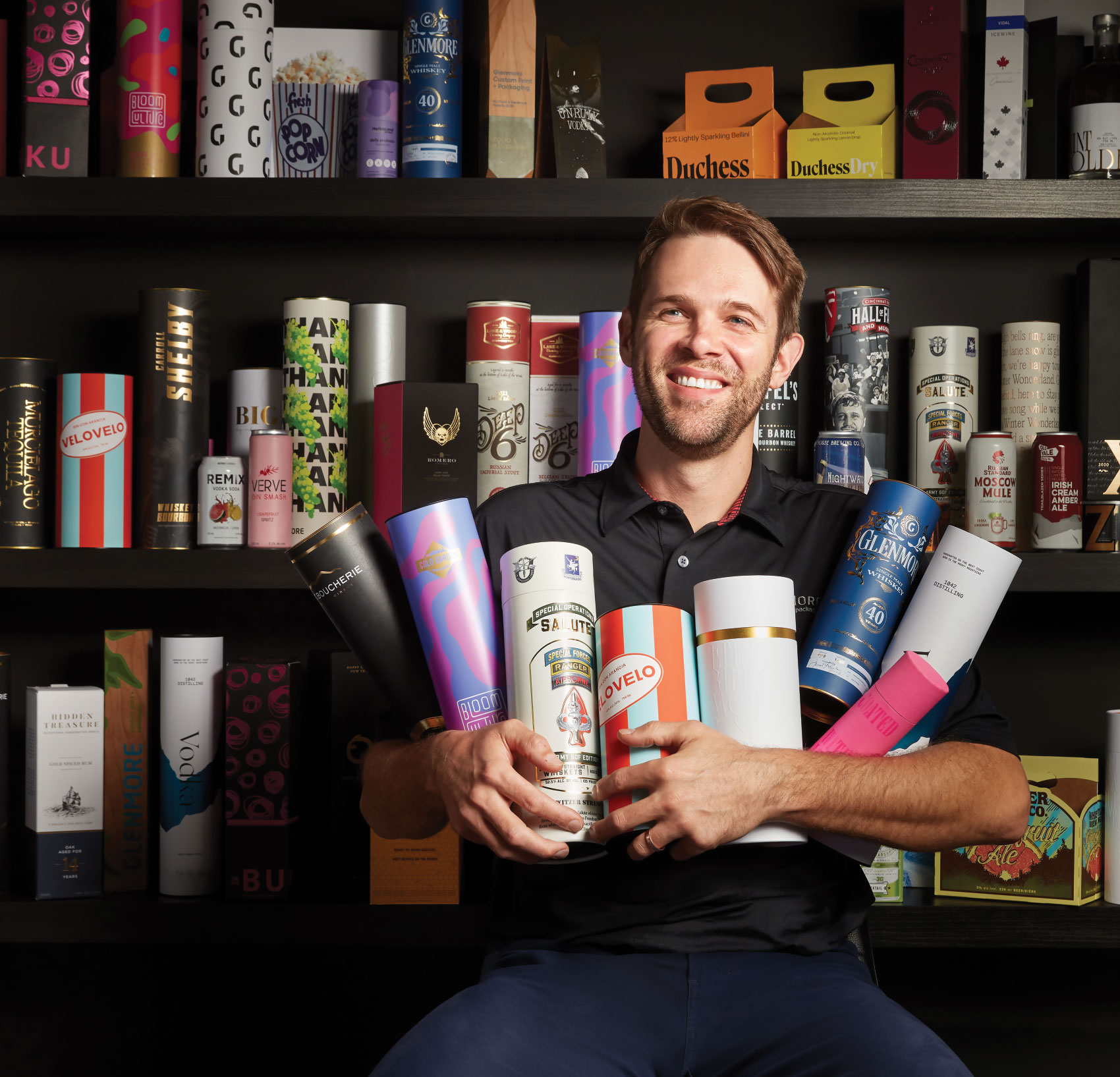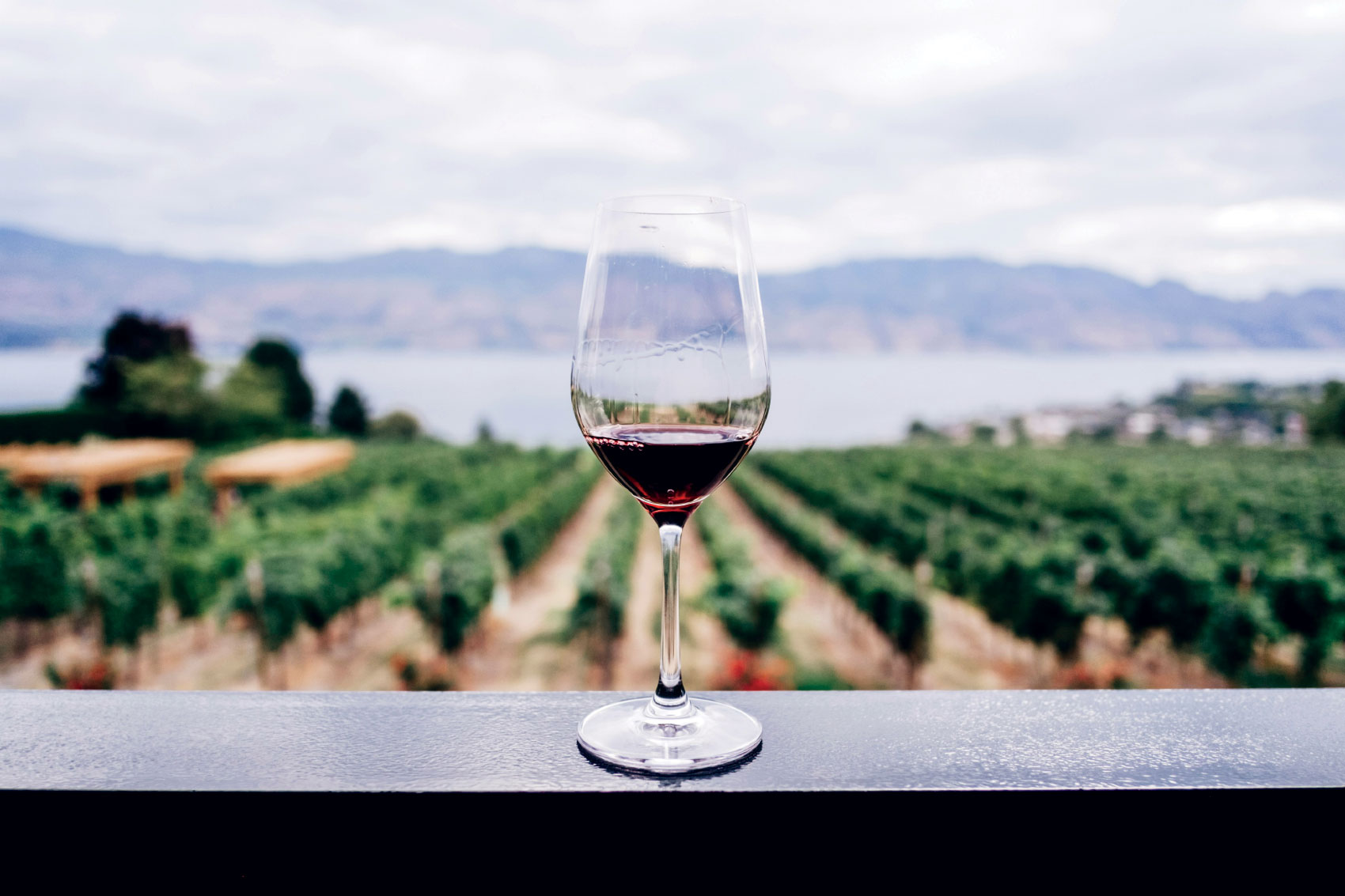Interest in solar power has been steadily increasing in Canada as electricity costs continue to rise and Canadians seek out renewable sources of energy.
A New Brunswick-based company is tapping into that interest, and it could have a profound impact on the way many craft wine, beer and spirits makers go about producing their products. The Smart Energy Company is a renewable energy developer based in Upper Golden Grove, N.B. It was founded by brothers and co-CEOs Jeff McAloon and his brother, Mark, in 2016.
The company’s signature product is the NOREASTER, a modular, stackable micro solar energy system designed to power farms located in regions that experience significant snowfall, fog and wind. While the system can be used on virtually any farm, it has become particularly popular among craft spirits producers in Eastern Canada. Verger Belliveau Orchard, a family-owned business in Memramcook, N.B., that produces ciders and wines, and Blue Roof Distillers, which produces a potato-based vodka in Malden, N.B., are among its adopters.
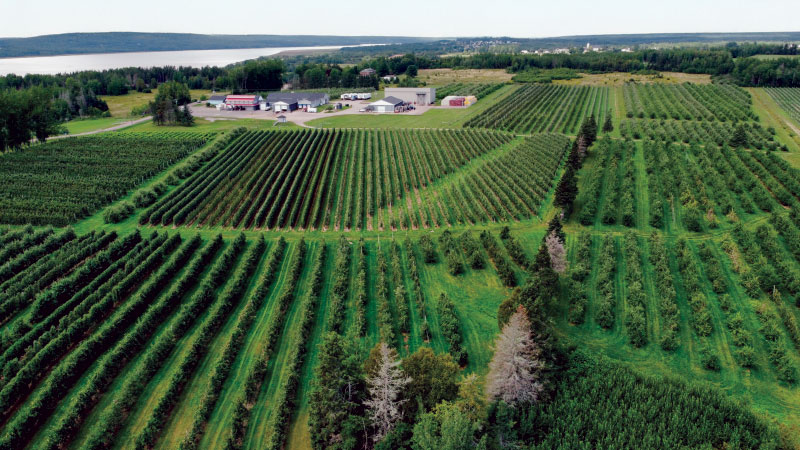
The ground-mounted system is a 34-foot-long, 10-kilowatt solar array that converts energy from the sun into alternating current electricity using an inverter contained within the unit. Its modular design means that it can be scaled to meet the energy requirements of any size of operation. Jeff says one of the main reasons the NOREASTER is a good fit for producers in the beverage-alcohol sector is the fact that it offers producers control over their energy costs.
“Buying your electricity to produce fruit or … harvesting the fruit to produce a final beverage can be a very energy-intensive activity,” Jeff said. “Right now, most of those producers are essentially renting their electricity from the utility. If they start to take over the generation of the electricity themselves, that’s a cost they can now eliminate or have fixed for the next 40 or 50 years, which can add up to a pretty significant saving.”
Another asset that makes the NOREASTER attractive to beverage producers is its modular design, which allows users to start small and expand down the road when it is convenient. It also means the system can be configured in a variety of different ways to minimize the amount of space the land-based system requires, an important consideration for producers trying to maximize the amount of harvestable land available to them.
“We don’t want to take up valuable crop space, so we’ve designed them [to be installed] in small chunks,” Jeff said. “Some farmers may need just one NOREASTER to offset a meaningful amount of electricity. Others may need 10, others may need 50 and others may need 120. It’s meant to be scalable.”
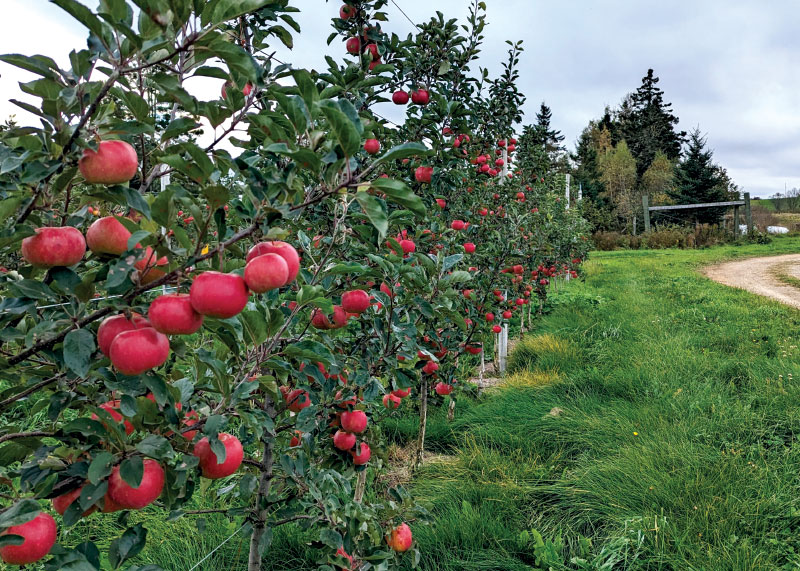
Where it once would have taken 15 years or more for a solar system to pay for itself, that timeframe has now shrunk to four to six years, thanks to increased electrical costs and improved government rebates and incentives for alternate forms of energy production.
The system is an ideal fit for producers who have adopted agrivoltaics principles, a dual-use land approach that combines solar energy production with agricultural production. Not only does it provide cheaper energy, but it is also capable of protecting crops or soil from harsh conditions such as heavy rains or strong winds, Jeff adds.
The NOREASTER is both manufactured and distributed by The Smart Energy Company. The brothers started out using solar power systems manufactured by other companies, but quickly discovered they couldn’t stand up to the harsh winds and wicked ice storms that many East Coast communities endure. That led to them designing their own system in conjunction with researchers at the University of New Brunswick and the Saint John Energy utility company.
“One of our earliest customers was a dairy farmer. He called us one day after a particularly harsh winter storm and said ‘Boys, my solar panels are flying through the field. Is that supposed to happen?’” Jeff recalled. “I can laugh about it now, but we weren’t laughing at the time. We spent a year going back and fixing and rewelding and beefing things up. It’s now built to be robust for any kind of storm that can be thrown at it, hence the name.”
The NOREASTER comes with a 50-year warranty. It costs about $25,000 per kit and that price can climb to about $50,000 when it’s partnered with a battery system or generator. Some provincial rebates are available to buyers, and the federal government passed a 30 per cent refundable tax credit for incorporated farm businesses who convert to renewable energy.
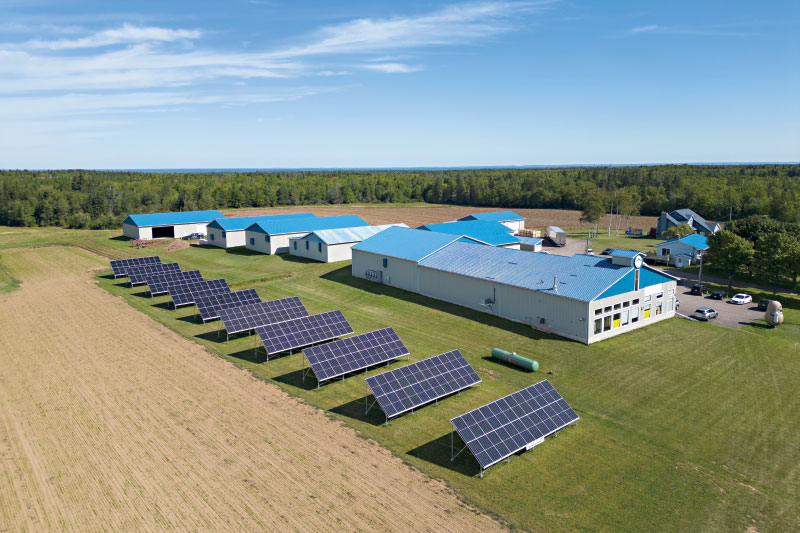
Jeff says the system can pay for itself within five to seven years depending on utility rates in a given jurisdiction. In Ontario, for example, the NOREASTER can produce a single kilowatt hour of energy at a cost of three or four cents compared to 14 to 18 cents for the same kilowatt hour supplied by that province’s energy utility.
Another selling point of the NOREASTER, which won a National Clean Energy Award, is that it’s relatively easy to install. About 90 per cent of The Smart Energy Company’s customers install the kits themselves, though a qualified electrician is required to connect the finished product to an operation’s power supply system. Jeff says the first conversation his employees have with potential customers typically focuses on what the current energy consumption of their operation is and how much of that can be offset using the NOREASTER.
In some cases, it can be as much as 100 per cent. Once that has been established, a consultant helps the customer determine what their budget is, decide how much space they have available and how many units that space can accommodate. Jeff says it’s interesting how many of his customers are largely unaware of their energy consumption prior to installing the NOREASTER, but become keenly aware of it after using the system for a while.
“Most farmers we talk to aren’t really aware of what their electricity costs are. They just have a general sense that electricity costs are going up,” Jeff said. “But once we’re finished talking to them and educating them about how they can generate their own electricity they become hyperaware. They go from that state of unawareness to looking at the energy app on their phone every single day to see how much energy they are producing and how much they are using.”
Bourgeois’s advice to beverage-alcohol producers who may be contemplating a switch to solar is to do their homework and find out what kind of provincial or federal incentives are available to them to help reduce installation costs.
Verger Belliveau Orchard owner Samuel Bourgeois installed five NOREASTER units on his 110-acre operation last summer and they have been operating since November. They supply between 50 and 60 per cent of the power required to operate the orchard’s cidery.
Bourgeois says his family has always advocated for the use of sustainable and innovative farm practices, so switching to an alternate source of energy was a no-brainer. After several years of investigating the choices available to him, including wind, he chose solar since it was the most affordable option and can be tailored to fit any size of operation. “It was the one that made the most sense for us,” he said.
Bourgeois says shifting to solar energy has already had an impact on his business. His energy costs have remained static despite a recent price increase instituted by his local utility. “It’s kept our [power] bills where they were at,” he said. “That’s one of the things that I kind of like about solar. It should stabilize your energy costs. With the power company, you don’t know when you’re going to have increases. This way, it’s much easier to budget for your utility costs.”
Bourgeois admits he did experience a few surprises soon after the system became operational. Perhaps the biggest one was the fact the system began producing power immediately, despite cloudy conditions at the time. “It still produces a little bit of power even though it’s quite cloudy. For me, that was a surprise, in a way. I always thought it was only going to run when there’s sun outside,” he said.
The other surprise for Bourgeois was the fact that, when it snowed, the solar panels managed to clear up by themselves and lost very little energy-producing capacity. “That was a good thing,” he said. “That’s something we were hesitant about initially. We can have some big dumps of snow here once in a while, and if we have to clean them every time, that’s another job we have to do.”
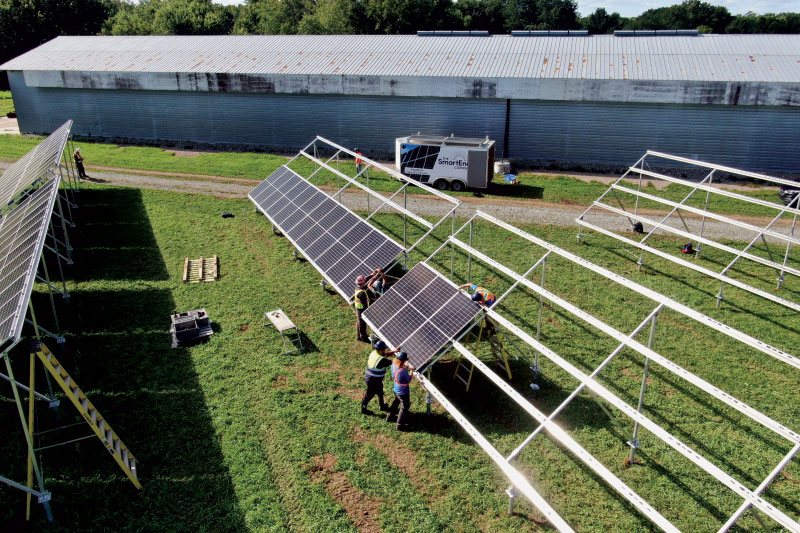
Not only has the switch to solar power helped with the orchard’s bottom line, but it’s also earned the business two thumbs up from many of its customers. The solar panels are visible as soon as clients walk into the orchard’s yard and they often generate questions and kudos.
“There might not be any [return-on-investment] directly related to that, but long-term, if the customer knows that we care about the environment and we care about the people around us, hopefully that brings them here to buy our products or gets them thinking about us at least,” he said.
Bourgeois’s advice to beverage-alcohol producers who may be contemplating a switch to solar is to do their homework and find out what kind of provincial or federal incentives are available to them to help reduce installation costs. He also recommends they shouldn’t be afraid to try something new. “I understand the farmer that’s maybe close to retirement not wanting to leap on it. But that next generation … if it’s something that fits in that farm’s perspective and there’s capacity to borrow, I would not be afraid of it,” he said.
Jeff suggests business owners look at the latest data available before jumping to any conclusions about whether or not solar power is a suitable option for their operation. He says in the past five to 10 years the “payback” for solar has changed considerably. Where it once would have taken 15 years or more for a solar system to pay for itself, that timeframe has now shrunk to four to six years, thanks to increased electrical costs and improved government rebates and incentives for alternate forms of energy production. What has Jeff excited about the future is industry and individuals alike are now talking more and more about energy consumption and how to become smarter consumers of energy.
“We need to generate our own clean energy and then we need to be smart about how we use that energy. As we gain an understanding of something, we’re better able to manage it, manage it more effectively and efficiently. It’s that sort of energy awareness that I’m most excited about,” said Jeff.


